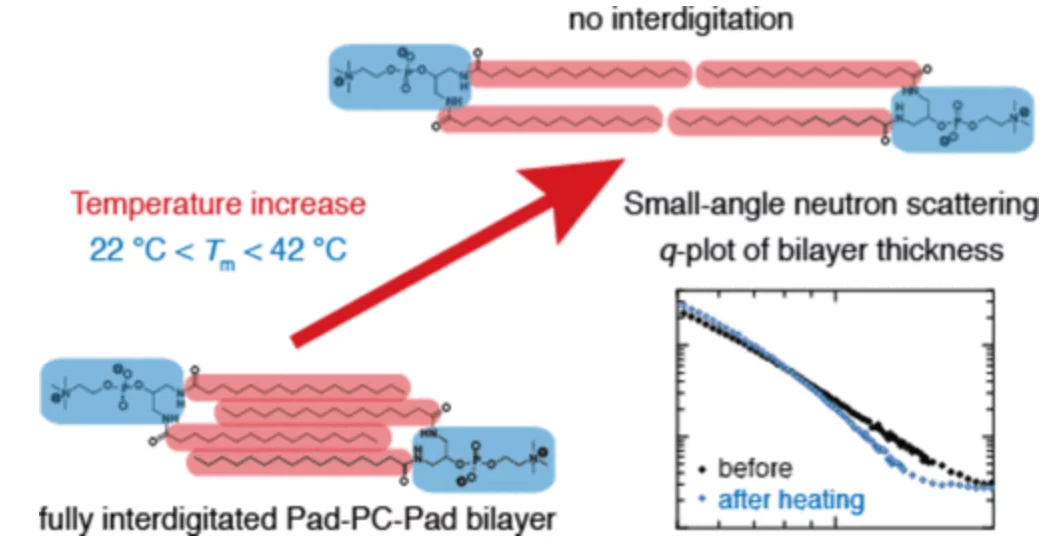Liposomes of specific artificial phospholipids, such as Pad-PC-Pad and Rad-PC-Rad, are mechanically responsive. They can release encapsulated therapeutics via physical stimuli, as naturally present in blood flow of constricted vessel segments. The question is how these synthetic liposomes change their structure in the medically relevant temperature range from 22 to 42 °C.
In the present study, small-angle neutron scattering (SANS) was employed to evaluate the temperature-induced structural changes of selected artificial liposomes. For Rad-PC-Rad, Pad-Pad-PC, Sur-PC-Sur, and Sad-PC-Sad liposomes, the SANS data have remained constant because the phase transition temperatures are above 42 °C. For Pad-PC-Pad and Pes-PC-Pes liposomes, whose phase transitions are below 42 °C, the q-plots have revealed temperature-dependent structural changes. The average diameter of Pad-PC-Pad liposomes remained almost constant, whereas the eccentricity decreased by an order of magnitude. Related measurements using transmission electron microscopy at cryogenic temperatures, as well as dynamic light scattering before and after the heating cycles, underpin the fact that the non-spherical liposomes flatten out. The SANS data further indicated that, as a consequence of the thermal loop, the mean bilayer thickness increased by 20%, associated with the loss of lipid membrane interdigitation. Therefore, Pad-PC-Pad liposomes are unsuitable for local drug delivery in the atherosclerotic human blood vessel system. In contrast, Rad-PC-Rad liposomes are thermally stable for applications within the human body.
Facility: SINQ
Reference: S. Matviykiv et al, Langmuir 35,34, 11210 (2019)
Read full article: here


